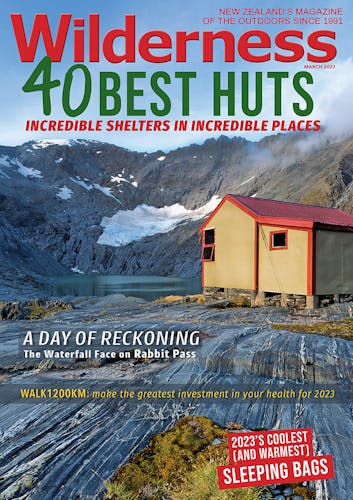Price:
$549 (plus subscription)
Our Rating:
Lightweight SOS and communication device with substantial battery life.
Plusses: Global messaging and weather forecasts, extensive battery life.
Minuses: Expensive, active subscription required, terrain affects messaging reliability.
Features
The inReach Messenger is Garmin’s latest satellite-based SOS and communications device. It enables users to call for SOS/rescue with the push of a button (as with a PLB), but also send and receive text-based communications or download a weather forecast via the Iridium satellite network. The Messenger will use cellular or WIFI networks during communications if these networks are available. It can track a users’ position from every two minutes through to every four hours, with the location tracking appearing on a shareable map on Garmin’s Explore website. The biggest point of difference from similar devices though is its extensive battery life. The Messenger will remain active for up to 28 days sending your location every 10 minutes. This is roughly double the battery life of an inReach Mini 2. The device weighs 114g.
Display and ease of use
The Messenger is designed to be used when paired with a smartphone running Garmin’s Messenger app as it has a much smaller display than its sister product, the InReach Mini 2.
All essential functions will work without a phone, but composing messages is slow. However, messages can be read on the screen, such as weather forecasts and time and battery level checks. With the phone app, messages can be composed as would normally be done on a phone, and all of the other device functions are faster to use. Activating an SOS is as simple as flicking back a button cover and holding a button down until the alert starts, or you can activate a rescue via the app. The Messenger fits easily in the palm of your hand and has a lanyard mount, but there’s no screw-in mount for attaching to a pack strap or belt, although the device works just fine sitting in the top pocket of a pack, or in a hip bag, as I have used it.
SOS and emergency use
When an SOS is activated, the Messenger makes direct contact with Garmin’s emergency response centre, which then coordinates a rescue with local authorities. Like the Mini 2, the Messenger provides two-way communication with rescue services, or other contacts, as well as SOS. It doesn’t use the same dedicated rescue frequency as that used by PLBs to send a homing signal, potentially making it less accurate in complex terrain.
Non-emergency communication use
From the phone app, sending a message is as simple as picking a recipient from a phone contact list and messaging the desired person via their phone number or email address, or to another inReach. With a clear sky view, messages can be sent and received very quickly, but if you’re close to a cliff or in a deep valley, it can take several minutes. It’s similar when downloading a weather forecast.
I’ve been cycling with a Messenger in South America for the past two months, with it set to track location every 10 minutes. At the last check, with the device left on and tracking constantly for the past four days, battery life was at 70 per cent. This extended battery life makes the device very useful for outdoor users who want full-time tracking on a trip for peace of mind for friends and family back home. This varies with situations as the Messenger uses more power when it does not have a clear view of the sky.
Additional features include a Trackback function, which follows your route back via the breadcrumb trail, and reverse charging, allowing a smartphone to be charged.
Value
A subscription package is also required on top of the $549 price, which makes the Messenger more expensive than a regular PLB. However, that cost enables cutting-edge technology that provides communications anywhere in the world.
Verdict
Having communication and weather forecasts while you’re in the hills can greatly improve decision-making and safety, not to mention the ability to call a rescue, making the Messenger a powerful tool to have on a trip. But, if the option is available, carrying both a Messenger and PLB in the party provides the ultimate assurance.








